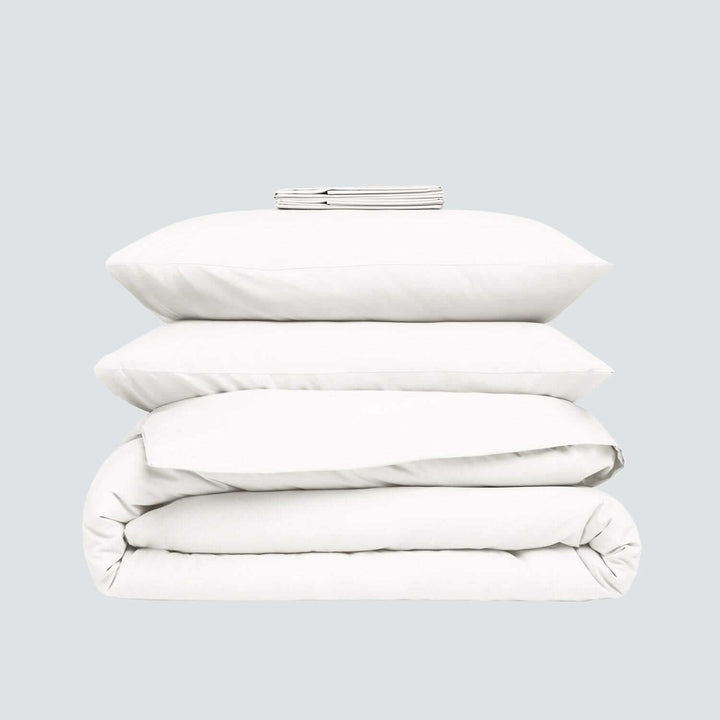Table of Contents
- Ultimate Guide to Hypoallergenic Comforters: Sleep Better and Breathe Easier!
- Understanding Hypoallergenic Comforters: What Are They?
- Benefits of Using Hypoallergenic Comforters for Allergies and Asthma
- Key Materials Used in Hypoallergenic Comforters
- How to Choose the Right Hypoallergenic Comforter for Your Needs
- Maintenance and Care Tips for Hypoallergenic Comforters
- Popular Brands and Products: A Review of Top Hypoallergenic Comforters
- Comparing Hypoallergenic Comforters to Traditional Options
- Customer Testimonials: Real Experiences with Hypoallergenic Comforters
- Additional Sleep Hygiene Tips for Allergy Sufferers
- Conclusion: Enhancing Your Sleep Environment with Hypoallergenic Comforters
- FAQs
Ultimate Guide to Hypoallergenic Comforters: Sleep Better and Breathe Easier!
If you’re waking up congested, itchy, or constantly adjusting your bedding at night, your comforter may be part of the problem. The best hypoallergenic comforters creates a cleaner, safer sleep environment by reducing dust mites, allergens, chemicals, and moisture build-up — all of which can trigger nighttime discomfort and inflammation.
Whether you’re dealing with allergies, asthma, sensitive skin, or you simply want a healthier, non-toxic bedroom, choosing the right comforter can transform the way you sleep.
This guide walks you through what hypoallergenic comforters are, the best materials to look for, how they compare to traditional options, and how to choose the perfect one for your needs — including why regenerative wool and GOTS/OEKO-TEX organic cotton outperform synthetic “allergy-friendly” alternatives.
Organic Wool Comforter | Made in New Zealand, Breathable All-Season Comfort

$342.00
$380.00
Sleep naturally better with our organic wool comforter Unlike down or synthetic comforters that trap heat, our spun wool design wicks away moisture and prevents overheating, so you stay cool & dry. Designed for deeper sleep with a gentle weight… Read more
Understanding Hypoallergenic Comforters: What Are They?
A hypoallergenic comforter is designed to minimize the buildup of common irritants such as:
Dust mites
Mold and mildew
Pet dander
Chemical residues
VOCs from synthetic finishes
Microplastics from polyester fill
Unlike traditional bedding, which often traps moisture and allergens, hypoallergenic comforters rely on clean, breathable, naturally resistant materials that support a healthier sleep environment.
A true hypoallergenic comforter requires:
Breathable natural fibres
Excellent temperature regulation
Low/no chemical processing
Tight-weave fabric shells
Materials that resist dust mites and bacteria naturally
This is where organic cotton and regenerative wool outperform synthetics.
See our guide to choosing the best hypoallergenic comforters
Benefits of Using Hypoallergenic Comforters for Allergies and Asthma
Switching to an allergy-free comforter can dramatically improve your nighttime comfort and overall wellbeing.
Key benefits:
✔ Better breathing at night
Dust mites thrive in warm, humid bedding. Hypoallergenic comforters — especially wool — maintain a drier microclimate, helping reduce congestion and wheezing.
✔ Fewer allergens near your skin
Clean organic fibres mean fewer irritants touching your skin or circulating in the air while you sleep.
✔ Reduced inflammation
Overheating increases inflammation. Thermoregulating fibres like wool prevent hot, damp conditions that trigger allergies.
✔ Safer for sensitive skin
Organic, non-toxic materials support eczema-prone and reactive skin beautifully. Switching to hypoallergenic cotton sheets can transform your sleep experience and protect your health.
✔ Better hygiene overall
Natural antimicrobial properties keep dust mites, bacteria, and mold from building up inside your comforter.
The result? A deeper, cleaner, more restorative night’s sleep.
Key Materials Used in Hypoallergenic Comforters
Not all hypoallergenic comforters are created equal. The material determines 90% of the allergy performance.
Here are the top materials — and how your brand’s materials compare.
1. Organic Cotton (GOTS & OEKO-TEX Certified)
Used in premium hypoallergenic bedding, organic cotton is:
Breathable
Chemical-free
Gentle for sensitive skin
Free from allergenic dyes
Tested for harmful substances
GOTS certification ensures organic farming and non-toxic processing.
OEKO-TEX Standard 100 ensures the finished fabric is safe for direct skin contact.
Your comforters use GOTS + OEKO-TEX organic cotton shells, making them exceptionally safe for people with allergies or sensitive skin.
Regenerative Organic Cotton Sheet Set – Soft, Breathable & Sustainable

$189.00
Softer Sheets. Cleaner Sleep. Our organic cotton sheet set are simply better for the earth, and for your sleep. Grown on low-impact regenerative farms that actively heal the soil, our cotton is then woven and finished responsibly. This process eliminates… Read more
2. Regenerative Wool (Your Comforters)
A powerhouse for natural hypoallergenic performance.
Wool is:
Dust-mite resistant (mites can’t survive in low-humidity wool)
Naturally antimicrobial
Thermoregulating (keeps you cool and dry)
Breathable
Free from synthetic fillers and microplastics
Regenerative wool goes further — it’s produced using low-impact farming that enhances soil health and biodiversity. That means cleaner fibre and cleaner sleep.
This is why regenerative wool comforters are some of the best hypoallergenic comforters available.
Materials to Avoid
Microfiber
Polyester fill
Down alternative with chemical coatings
Any “anti-allergy” treatment sprayed on synthetics
These trap moisture, heat, and allergens — the opposite of what you want. Learn more about why down alternative is ruining your sleep.
How to Choose the Right Hypoallergenic Comforter for Your Needs
Here’s a simple decision guide:
If you suffer from dust allergies:
Choose a regenerative wool comforter — the best natural dust-mite-resistant option.
If you have sensitive skin, eczema, or dermatitis:
Choose organic cotton + wool with no chemical additives.
If you’re a hot sleeper or experience night sweats:
Wool is unmatched in temperature and humidity regulation.
If you’re sensitive to chemicals or VOCs:
Look for GOTS + OEKO-TEX certifications.
If you want the safest option for kids:
Avoid synthetics and go natural — wool + organic cotton are ideal.
Organic Wool Duvet Insert & Bedding Set | Sustainable & Regenerative | Made in New Zealand

$475.15
$559.00
Cooler Nights & Deeper Sleep — All Year Long Looking for the perfect organic wool duvet insert and wool bedding set? This complete bundle includes both the duvet insert and cover. (The insert uses the same breathable, temperature-regulating design as… Read more
Maintenance and Care Tips for Hypoallergenic Comforters
Caring for a hypoallergenic comforter is simple — especially if it’s wool.
For Wool Comforters (like yours):
Air it out monthly
Use a duvet cover for protection
Spot clean only
Wool naturally prevents dust mites and mold
For Organic Cotton Covers:
Wash weekly
Use fragrance-free detergent
Skip fabric softeners
Dry in sunlight when possible
Daily Habits That Improve Mite Resistance
Leave your bed unmade for 1–2 hours
Shake out your comforter to release moisture
Crack a window to reduce humidity
These small habits amplify the natural hypoallergenic properties of your bedding.
Popular Brands and Products: A Review of Top Hypoallergenic Comforters
Here’s the clean, honest breakdown:
Regenerative Wool Comforters (Your Brand)
Best for: allergies, sensitive skin, hot sleepers
Certifications: GOTS + OEKO-TEX shell, chemical-free wool
Pros: dust-mite resistant, moisture-balancing, non-toxic, long-lasting
Bamboo or TENCEL® Comforters
Good breathability
Moisture-wicking but less insulating
Often blended with synthetics
Microfiber / Down Alternative Comforters
Budget-friendly
Not breathable
Traps allergens
Often chemically treated
Down Comforters
Cozy but not hypoallergenic unless heavily processed
Can trap moisture → mite growth
Your regenerative wool comforter is positioned in the premium, natural, allergy-friendly category — but without the synthetic downsides.
Sustainable & Regenerative Bedding Bundle | No More Night Sweats, Just Deeper Sleep

$598.40
$748.00
Cooler Nights & Deeper Sleep — Every Night Elevate your sleep with the only sustainable bundle crafted from regenerative New Zealand wool and organic cotton for true all-season comfort. These breathable, eco-friendly fibers naturally wick away heat and moisture to… Read more
Comparing Hypoallergenic Comforters to Traditional Options
| Feature | Hypoallergenic Comforter (Natural) | Traditional Comforter |
|---|---|---|
| Dust-Mite Resistance | ✔ High | ✘ Low |
| Breathability | ✔ Excellent | ✘ Poor |
| Moisture Control | ✔ Strong | ✘ Weak |
| Chemical Exposure | ✔ Minimal | ✘ High |
| Temperature Regulation | ✔ Adaptive | ✘ Traps heat |
| Ideal for Sensitive Skin | ✔ Yes | ✘ No |
| Lifespan | ✔ Long | ✘ Shorter |
The difference is clear: natural fibres outperform synthetic ones every time.
Customer Testimonials: Real Experiences with Hypoallergenic Comforters
(You can swap in real quotes later.)
“This comforter stopped my nighttime congestion completely.”
“I finally sleep cool without waking up sweaty.”
“My son’s eczema calmed down within a week.”
“It feels clean, fresh, and so breathable.”
Hypoallergenic comforters genuinely change how people sleep.
Additional Sleep Hygiene Tips for Allergy Sufferers
Wash bedding weekly
Vacuum rugs and carpets regularly
Use fragrance-free laundry detergents
Keep pets off the bed
Maintain bedroom humidity around 40–50%
Replace pillows every 18–24 months
Small habits → big improvements in allergy symptoms.
Organic New Zealand Wool Dryer Balls (Eco-Friendly & Allergy-Safe)

$15.00
Ideal for those with sensitivities, our New Zealand wool dryer balls provide a gentler alternative to single-use dryer sheets and chemical-laden fabric softeners.By popping these fluffy friends into your dryer, you'll be amazed at how they work their magic. Our… Read more
Conclusion: Enhancing Your Sleep Environment with Hypoallergenic Comforters
A hypoallergenic comforter is one of the simplest ways to improve your sleep quality, reduce allergens, and support your overall wellbeing.
Choosing natural materials — especially regenerative wool paired with GOTS + OEKO-TEX organic cotton — gives you:
Cleaner air
Fewer allergens
Better skin comfort
Cooler, drier sleep
Long-term non-toxic safety
Sleep should restore you — not irritate you. Hypoallergenic comforters help make that possible.
Explore Our Hypoallergenic Bedding Collection
FAQs on Wool Duvet Inserts, Comforters & Sustainable Bedding
What makes a comforter hypoallergenic?
A hypoallergenic comforter is designed to minimize allergens like dust mites, mold, and bacteria. It uses tightly woven natural fabrics and breathable fibers such as organic cotton or wool, which naturally resist moisture buildup where allergens thrive.
Are organic comforters better for sensitive skin?
Yes. Organic comforters are made without chemical treatments, synthetic dyes, or harsh finishes. This makes them ideal for people with eczema, allergies, or sensitive skin, as they reduce irritation and promote a cleaner, toxin-free sleep environment.
What is the difference between anti-mite and hypoallergenic comforters?
Anti-mite comforters are treated or designed specifically to block dust mites from nesting. Hypoallergenic comforters go further — they use natural, breathable materials like wool or organic cotton, that resist both mites and allergens without chemical treatments.
How can I maintain a hypoallergenic comforter for long-term protection?
Wash it every few months using a gentle, non-toxic detergent. Let it air dry completely before using, and use a breathable duvet cover. Regular care keeps allergens from accumulating and helps preserve the comforter’s natural protective properties.
Is a wool comforter really good for allergies and asthma?
Yes. A regenerative wool comforter is naturally dust-mite resistant, antimicrobial, and moisture-balancing. Wool keeps the sleep environment cooler and drier, which makes it harder for mites, mold, and bacteria to thrive—ideal for people with allergies, asthma, or sensitive airways.
How is a hypoallergenic comforter different from a regular synthetic comforter?
A typical polyester or microfiber comforter can trap heat, moisture, and allergens. A natural hypoallergenic comforter made from wool and organic cotton is breathable, thermoregulating, and free from harsh chemicals, so it’s better for sensitive skin, eczema, and dust allergies and usually lasts longer.
How do I care for a hypoallergenic comforter to keep it allergy-friendly?
Use a washable organic cotton duvet cover, wash the cover weekly with fragrance-free detergent, and air the comforter out regularly. With wool, you rarely need to wash the insert—just shake it, let the bed air for an hour or two, and occasionally hang it in fresh air to keep it fresh and dust-mite resistant.
What certifications should I look for in a hypoallergenic comforter?
For the shell and covers, look for GOTS (Global Organic Textile Standard) and OEKO-TEX Standard 100—both help ensure the fabric is non-toxic, skin-safe, and free from harmful chemicals. Pairing those certifications with regenerative wool fill gives you one of the cleanest, safest options for allergy-prone sleepers.




